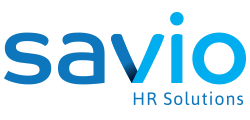With the outbreak of COVID-19 many employers’ workforces were impacted by Federal, State, and local governments’ virus containment efforts. Stay-at-home, shelter-in-place, and other social distancing orders have resulted in the shutdown of nonessential businesses and restrictions on other services. These actions have resulted in record job losses all over the country.
To help both employers and employees, Federal and State governments have issued economic stimulus packages. The two largest stimulus bills affecting HR professionals are the Families First Coronavirus Response Act (FFCRA) and the Coronavirus Aid, Relief and Economic Security (CARES) Act. Both of these Acts contain provisions that affect unemployment insurance benefits.
These new laws have introduced numerous issues for employers regarding employee discharge, voluntary quitting, employees being able & available to work, employees working part-time, furloughs, and unreported earnings. During the COVID-19 era, unemployment has become a major area of confusion. To clarify, listed below are some crucial unemployment facts:
- Unemployment compensation is job insurance funded by employers
- State unemployment benefits are paid from state’s trust funds
- Federal weekly enhancement $600.00 is paid by Federal UI trust fund
- Short-term program for individuals out of work through NO FAULT OF THEIR OWN
- Under COVID-19 laws and regulations, there is NO work search requirement; no availability requirement; claimants do not have to be able to work (example: an employee can be sick with COVID-19 and still receive benefits)
- Employees may be able to draw unemployment if they quit their job, are fired, or refuse to return to work for COVID-19 related reasons
Below are the critical laws and orders and their impact on how we manage our human capital:
- Families First Coronavirus Response Act (FFCRA)
- Expanded FMLA to employees (who cannot telework) required to stay home with their children 18 years and younger whose schools or daycare providers have closed due to COVID-19. This 12-week leave would be a combination of 2 weeks unpaid and 10 weeks paid at ¼ the employee’s usual hourly rate.
- Emergency Sick Leave provides up to 80 of paid leave to qualifying employees.
- Emergency Unemployment Insurance provided funding to state agencies and funded those that waived their one week waiting period
- Required employers to display FFCRA poster
- Coronavirus Aid, Relief, and Economic Security Act (CARES)—provides an extra 13 weeks of benefits (total weeks cannot exceed 39)
- Pandemic Unemployment Assistance will pay UI benefits to those that do not qualify for regular state benefits. Examples are: self-employed individuals, employees of unregistered companies, and those that have not worked long enough to establish a state UI claim.
- Emergency Increase in Unemployment Compensation Benefits will pay an additional $600.00 per week for all claimants that are entitled to a state UI claim
- Pandemic Emergency Unemployment Compensation pays those that have exhausted all rights to state and other unemployment benefits
- Executive Order 1481 by Governor Tate Reeves extended his waiver of the 1 week waiting period from March 8-December 26, 2020, increased the $40 earning allowance to $200 for the period of May 3-June 27, 2020; Waived any charges related to COVID-19 and associated charges to both rated and reimbursable employer’s accounts for the period of March 8-June 27, 2020 with no interest accrued during this period; the Order also suspended all penalties for late reporting and contribution payments from March 8-July 31, 2020.
- The Mississippi Department of Employment Security also sent out a notice requiring employers to physically give all separated or separating employees a copy of the MDES Unemployment Insurance for Employees notice. In the past, it was sufficient for employers to post the notice.
Employers have used creative measures to allow employees to be paid, such as: rotating employees when work is slow in their area, reducing employee hours instead of terminating employees, rotating furloughs to help maintain employee earnings, paying employee benefits while on temporary layoffs, and filing unemployment claims for employees. Upon having employees return to work, employers must ensure a safe work environment that meet all CDC sanitation guidelines.
If an employee refuses to return to work, advise the employee that you, the employer, are offering them work that may be considered suitable by MDES. The employer should tell the employee the date work is to start, shift, pay, and hours being offered. If the employee continues to refuse, inform them that their current benefits may by revoked or affected. Make sure to DOCUMENT EVERYTHING! Promptly notify Savio HR Solutions. We have 10 days of employee’s refusal to notify MDES. After contacting Savio, we will handle the claim by notifying MDES and leading any resulting investigation.
It is our job to make your job easier and our goal is to exceed your expectations.
Please feel free to share the SMART – HR Tip with anyone that may find benefit.
We are available to assist with any workforce problem or question.





